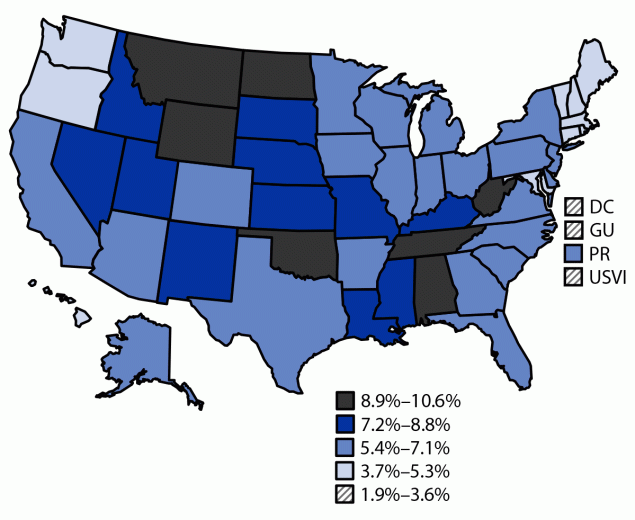
Four years after the introduction of SARS-CoV-2, researchers are still struggling to understand the long-standing covid, including the simple question of how many people have it. Estimates of its prevalence vary widely based on different study methods and definitions of the condition. Now, for the first time, the Centers for Disease Control and Prevention has attempted to estimate its prevalence among adults in each US state and territory. The results again show a wide range of prevalence estimates, while severely affected states appear to be relatively spared.
Overall, the CDC found that seven states in the South, West and Midwest had between 8.9 percent and 10.6 percent of long-term Covid cases: Alabama, Montana, North Dakota, Oklahoma, Tennessee, Wyoming and, the state with the highest rate at 10.6 percent, West Virginia. The results are published today CDC's Morbidity and Mortality Weekly Report.
At the other end of the spectrum, the states of New England, Washington and Oregon had lower prevalence rates, ranging from 3.7 percent to 5.3 percent. The lowest rate was seen in the US Virgin Islands at 1.9 percent. Washington, DC and Guam had a range of 1.9 percent to 3.6 percent.

Prevalence of long-term experience of COVID among adults aged ≥18 years in jurisdictions.
For these estimates, CDC researchers defined prolonged COVID cases as having self-reported symptoms lasting 3 or more months that were not present before acquiring COVID-19. Those symptoms include a wide range of ailments, from gastrointestinal problems to heart palpitations, joint pain, respiratory symptoms, neurological conditions and fatigue.
Estimates are based on survey responses from the National Surveillance Agency in 2022. The survey did not record some important data, including whether people received treatment during the acute phase of their COVID-19 infection and how long it had been since they were infected. Their longest covid (if not) and final length of vaccination status. Data on vaccination were only available from a subset of individuals surveyed and were not included in the report.
The authors believe the findings “will help identify geographic disparities in prolonged COVID across the United States, which can guide interventions to improve health equity.”